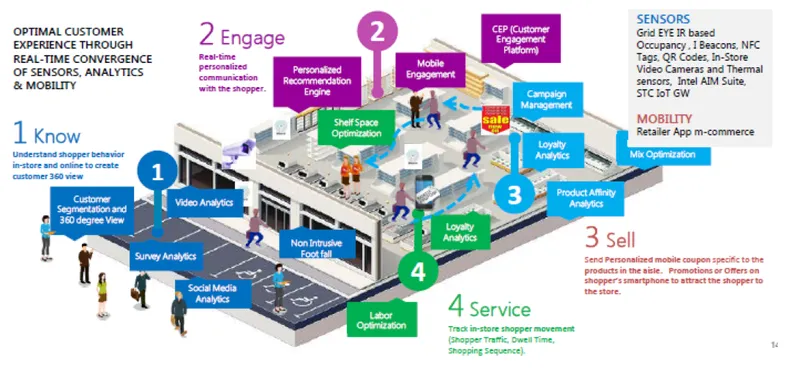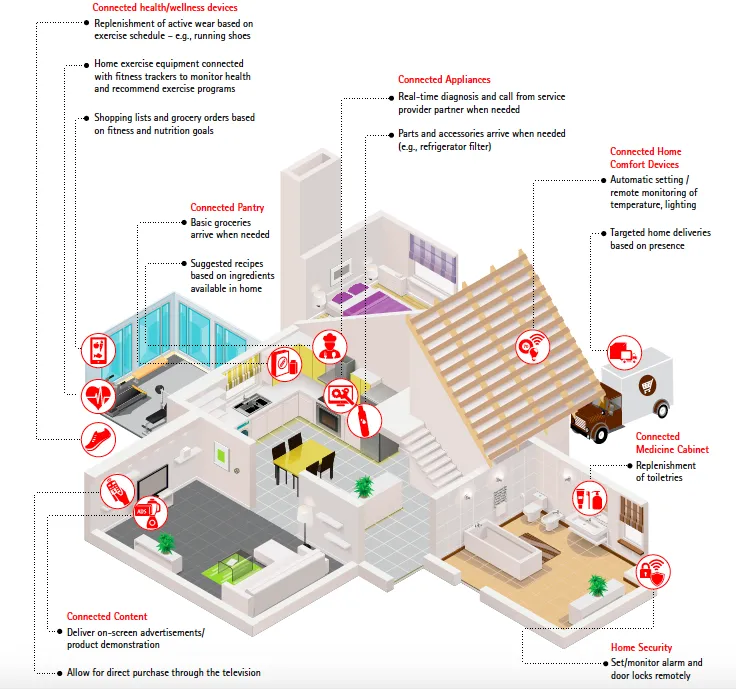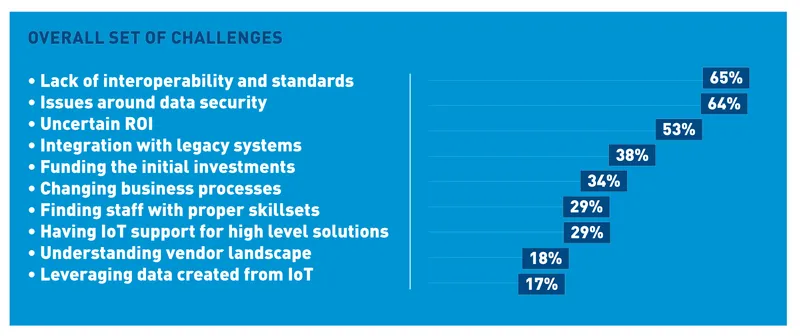What will embracing IoT in retail mean for the sector’s future?
“In the next century, Planet Earth will don an electronic skin. It will use the Internet as a scaffold to support and transmit its sensations.” – Neil Gross, 1999
Everyday physical objects are becoming uniquely identifiable and embedded with the ability to connect to other devices or networks. The Internet of Things (IoT), in true essence, is the inter-networking of physical devices, vehicles (also referred as “connected devices” and “smart devices”), buildings, and other items, embedded with electronics, software, sensors, actuators, and network connectivity that enable these objects to collect and exchange data.
Together with other disruptors, IoT will fundamentally reshape industries in the coming years and the impact will be relatively significant. IoT comes to life when its multiple building blocks simultaneously operate and communicate with each other.

Retail industry going the IoT way?
IoT is driving innovation and new opportunities by bringing every object, consumer, and activity into the digital realm. At the same time, leading businesses are making similar changes within their enterprises by digitizing every employee, process, product, and service. IoT could be particularly disruptive to the retail industry:
Improvising and refining the customer experience to the next level
IoT presents an opportunity for retailers to develop a vastly improved ecosystem that connects physical and digital worlds, allowing bidirectional, real-time interaction with consumers both inside and outside the store.
Optimizing supply chain operations
Connected devices and products provide retailers with the opportunity to help optimize operations in the face of a more complex supply chain, increasingly important digital channels, and a more demanding customer. RFID technologies, for example, can improve the precision of inventory tracking.
Introducing new channels and revenue streams
We’re already seeing examples of incremental revenues retailers can achieve by expanding into new channels or creating new, high-margin product categories for the emerging “connected home”. Household appliances, home security and comfort products, even health and wellness products are all becoming part of the IoT ecosystem. Retailers in home improvement or consumer electronics sectors not only can drive more sales of these connected devices, some retailers are taking further advantage of the wide array of connected products by becoming an integration “platform”.
The concept behind these platforms is to make it easier for customers to make all of their in-home devices talk to one another.


IoT, a reality – how?
It’s important for retailers to consider taking steps now to lay a foundation for IoT and a better ecosystem, especially in the below two major areas:

IoT challenges for retailers and the future journey
The biggest challenge with IoT is the rapid evolution of the scope and variety of technologies which can be used in the connected ecosystems. In retail specifically, the biggest and immediate challenge for companies to overcome is managing, analysing, and acting on the reams of data pouring in from all connected devices.

The time to unleash IoT is now. It is the first step to transform your store for 21st century retail. It addresses one of your most pressing challenges – how to provide a personal, seamless, and differentiated experience for customers who do not think in terms of a channel. Retailers that take the lead in this space stand to gain an important advantage in an already competitive environment. Early adopters will be positioned to quickly deliver IoT-enabled capabilities that can increase revenue, reduce costs, and drive a differentiated brand experience.
Our own thinking on this continues to evolve and we expect to witness additional perspectives further. One thing is however clear – to truly build value from IoT investments, retailers need to be expansive in their thinking, consider innovative applications, and use supporting technologies such as augmented intelligence.
Chand Girdhar is a part of the IT Engineering (Integrations) team at Lowe’s.
(Disclaimer: The views and opinions expressed in this article are those of the author and do not necessarily reflect the views of YourStory.)







